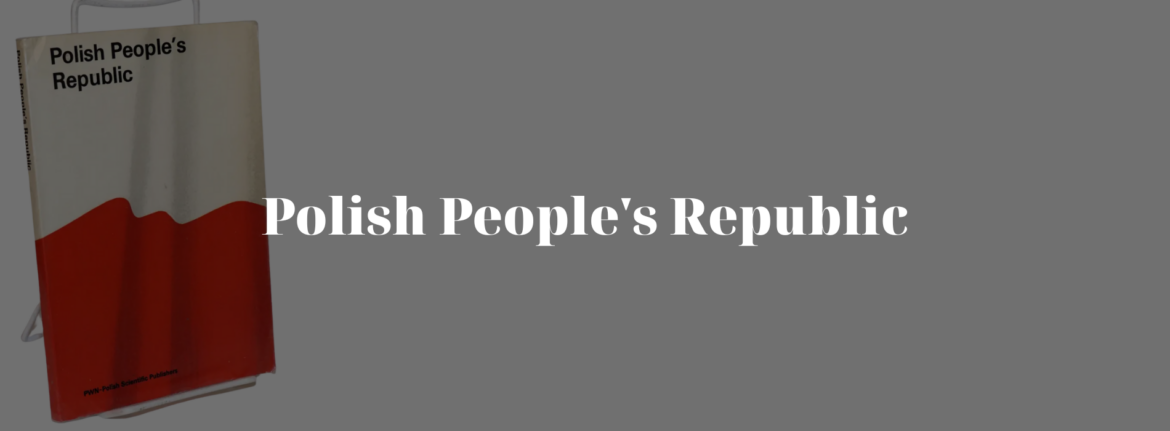The era of the Polish People’s Republic (Polska Rzeczpospolita Ludowa, PRL) spanned from 1947 to 1989, marking a significant chapter in Poland’s 20th-century history. Defined by communist rule under the influence of the Soviet Union, the PRL left a complex legacy, blending industrial progress and social reforms with political oppression and economic hardships.
The Establishment of the PRL
The PRL was established following World War II, as Poland fell under the Soviet sphere of influence. Although the country retained nominal independence, its government was effectively controlled by Moscow through the Polish United Workers’ Party (Polska Zjednoczona Partia Robotnicza, PZPR). The state adopted a socialist system, focusing on heavy industry, collective agriculture, and a centrally planned economy.
The official narrative portrayed the PRL as a workers’ paradise, yet its foundation was built on political repression. The period saw purges, show trials, and the persecution of opposition figures. Institutions such as the Ministry of Public Security (Urząd Bezpieczeństwa, UB) maintained a climate of fear, stifling dissent and suppressing independent thought.
Daily Life in the PRL
Life in the PRL was marked by a duality between state propaganda and the realities of everyday existence.
Economic conditions fluctuated, but scarcity was a constant feature. Shops often lacked basic goods, and queues for items like sugar, meat, and toilet paper became emblematic of the era. The government introduced rationing systems, yet shortages persisted. Bartering and private plots of land became vital survival strategies for many Poles.
Housing was another challenge. To address a post-war shortage, the state launched large-scale construction projects, creating uniform concrete apartment blocks, known as bloki. While these provided homes for millions, they also symbolised the monotonous and utilitarian nature of communist urban planning.
Despite these hardships, PRL citizens found ways to adapt. Informal networks, creative ingenuity, and the underground economy flourished. Cultural life, though censored, offered a respite through Polish cinema, literature, and music, often critiquing the regime through allegory and satire.
Key Events and Resistance
The PRL experienced several waves of political and social unrest, reflecting the dissatisfaction of its citizens.
- 1956 Poznań Protests: Workers protested against poor living conditions and low wages, leading to a violent government crackdown but also political reforms under Władysław Gomułka.
- 1970 Shipyard Strikes: Rising food prices sparked protests in coastal cities like Gdańsk, with workers clashing against security forces.
- 1980 Solidarity Movement: Perhaps the most significant challenge to PRL authority, the Solidarity (Solidarność) trade union, led by Lech Wałęsa, galvanised millions of Poles. It became a symbol of resistance and ultimately contributed to the regime’s collapse.
The imposition of Martial Law in 1981 by General Wojciech Jaruzelski attempted to suppress opposition, but international support for Solidarity and economic stagnation weakened the government.
Cultural Life under the PRL
Censorship shaped the cultural landscape, yet Poland’s intellectual and artistic communities thrived despite state control. Filmmakers like Andrzej Wajda and Krzysztof Kieślowski created internationally acclaimed works, while writers like Czesław Miłosz and Wisława Szymborska gained global recognition, some working in exile.
Music became another outlet for expression, with rock bands like Perfect and Republika voicing discontent with the regime. Polish theatre, particularly under directors like Jerzy Grotowski, used experimental techniques to critique societal conditions.
Television and radio were dominated by state propaganda, yet popular programmes such as Czterej pancerni i pies (Four Tankmen and a Dog) and Alternatywy 4 offered entertainment that resonated with the public.
The Fall of the PRL
By the 1980s, the PRL was struggling under the weight of its inefficiencies. Economic mismanagement, international isolation, and widespread unrest eroded the regime’s legitimacy. The influence of Pope John Paul II, the first Polish pontiff, further inspired the nation to seek freedom.
The Round Table Talks of 1989 between the government and opposition leaders marked the beginning of the end for the PRL. The talks paved the way for partially free elections, which Solidarity decisively won. On 31 December 1989, the name “Polish People’s Republic” was officially retired, and Poland transitioned to the Third Republic (III Rzeczpospolita).
Legacy of the PRL
The PRL remains a polarising period in Polish history. On one hand, it saw industrial growth, expanded access to education, and improvements in infrastructure. On the other hand, it was a time of political repression, economic inefficiency, and limited freedoms.
For many Poles, memories of the PRL are tinged with nostalgia for its sense of community and resourcefulness amid adversity, yet also serve as a cautionary tale of the costs of authoritarianism. The era continues to shape Poland’s identity, both as a reminder of past struggles and a testament to the resilience of its people.
